Potrebujeme váš súhlas na využitie jednotlivých dát, aby sa vám okrem iného mohli ukazovať informácie týkajúce sa vašich záujmov. Súhlas udelíte kliknutím na tlačidlo „OK“.
ASTM E2319-04(2011)
Standard Test Method for Determining Air Flow Through the Face and Sides of Exterior Windows, Curtain Walls, and Doors Under Specified Pressure Differences Across the Specimen
Automaticky preložený názov:
Štandardná skúšobná metóda pre stanovenie prietoku vzduchu Cez tvár a po stranách Vonkajšie Windows, obvodových plášťov, a dvere sa za zvláštnych tlakových rozdielov medzi ktorého vzor sa
NORMA vydaná dňa 1.11.2011
Informácie o norme:
Označenie normy: ASTM E2319-04(2011)
Poznámka: NEPLATNÁ
Dátum vydania normy: 1.11.2011
Kód tovaru: NS-45024
Počet strán: 8
Približná hmotnosť: 24 g (0.05 libier)
Krajina: Americká technická norma
Kategória: Technické normy ASTM
Kategórie - podobné normy:
Anotácia textu normy ASTM E2319-04(2011) :
Keywords:
air leakage, curtain walls, doors, fenestration, laboratory method, static pressure chamber, windows, Air leakage testing--building materials/constructions, Curtain walls, Doors/door assemblies, Fenestration systems, Pressure testing--building constructions/materials, Windows/window assemblies, ICS Number Code 91.060.50 (Doors and windows)
Doplňujúce informácie
| Significance and Use | ||||||
|
This test method is a standard procedure for determining the air flow characteristics of various components of the window system under specified air pressure differences at ambient conditions. Note 3—The air pressure differences acting across a building envelope vary greatly. The factors affecting air pressure differences and the implications or the resulting air leakage relative to the environment within buildings are discussed in the literature. , , These factors should be fully considered in specifying the test pressure differences to be used. Rates of air leakage are sometimes used for comparison purposes. Such comparisons may not be valid unless the components being tested and compared are of essentially the same size, configuration, and design. |
||||||
| 1. Scope | ||||||
|
1.1 This test method is a modified version of Test Method E283, and provides a standard laboratory procedure for determining air leakage separately through the face and sides of exterior windows, curtain walls, and doors under specified differential pressure conditions across the specimen. The test method described is for tests with constant temperature and humidity across the specimen. Note 1—Detailing buildings with continuous air barriers requires that the air barrier plane in a window system be clearly defined. When special circumstances dictate that the air barrier be sealed to the window frame at a location other than that used to seal the specimen to the test chamber in this test method, additional laboratory testing may be required to clarify potential paths of air flow through the sides of the window frame. The adapted testing procedure described herein is intended for this purpose. 1.2 This laboratory procedure is applicable to exterior windows, curtain walls, and doors and is intended to measure only such leakage associated with the assembly and not the installation. The test method can be adapted for the latter purpose. Note 2—Performing tests at non-ambient conditions or with a temperature differential across the specimen may affect the air leakage rate. This is not addressed by this test method. 1.3 This test method is intended for laboratory use. Persons interested in performing field air leakage tests on installed units should reference Test Method E783. Test Method E783 will not provide the user with a means of determining air flow through the sides of tested specimens. 1.4 Persons using this procedure should be knowledgeable in the areas of fluid mechanics, instrumentation practices, and shall have a general understanding of fenestration products and components. 1.5 The values stated in SI units are to be regarded as standard. The values given in parentheses are mathematical conversions to inch-pound units that are provided for information only and are not considered standard. 1.6 This standard does not purport to address all of the safety concerns, if any, associated with its use. It is the responsibility of the user of this standard to establish appropriate safety and health practices and determine the applicability of regulatory limitations prior to use. For specific hazard statement see Section 7. |
||||||
| 2. Referenced Documents | ||||||
|
Podobné normy:
Historická
1.4.2008
Historická
1.11.2009
Historická
1.5.2013
Historická
1.6.2012
Historická
1.6.2012
Historická
1.6.2012
Odporúčame:
Aktualizácia technických noriem
Chcete mať istotu, že používate len platné technické normy?
Ponúkame Vám riešenie, ktoré Vám zaistí mesačný prehľad o aktuálnosti noriem, ktoré používate.
Chcete vedieť viac informácií ? Pozrite sa na túto stránku.


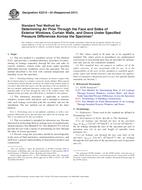
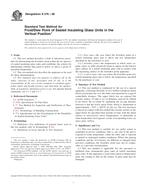 ASTM E576-08
ASTM E576-08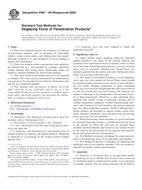 ASTM E987-88(2009)..
ASTM E987-88(2009)..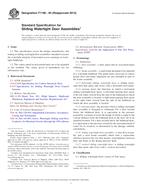 ASTM F1196-00(2013)..
ASTM F1196-00(2013)..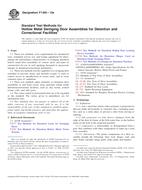 ASTM F1450-12a
ASTM F1450-12a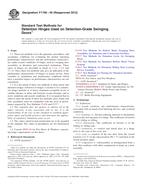 ASTM F1758-05(2012)..
ASTM F1758-05(2012)..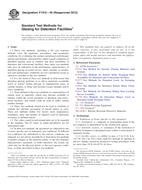 ASTM F1915-05(2012)..
ASTM F1915-05(2012)..
 Cookies
Cookies
